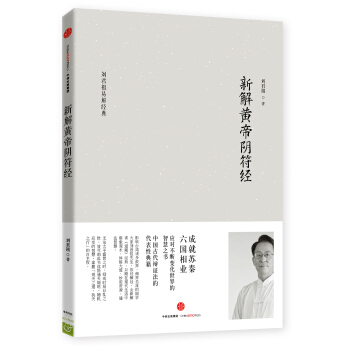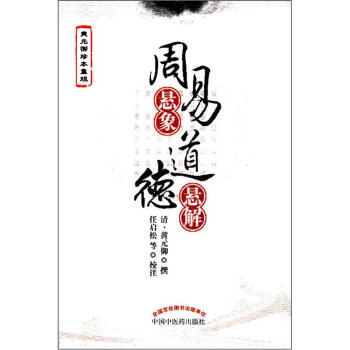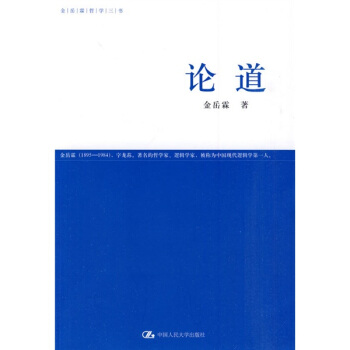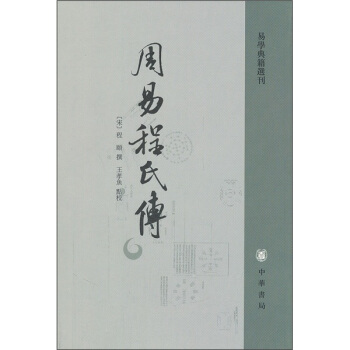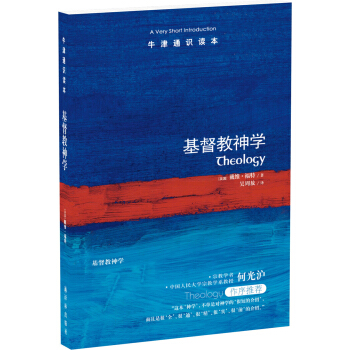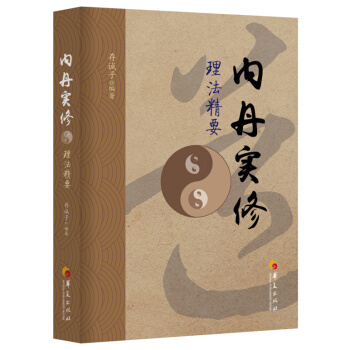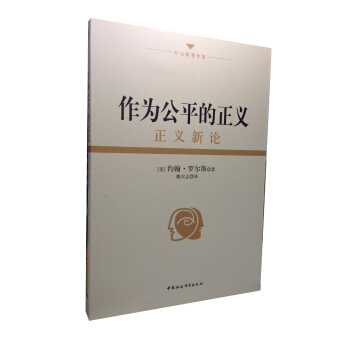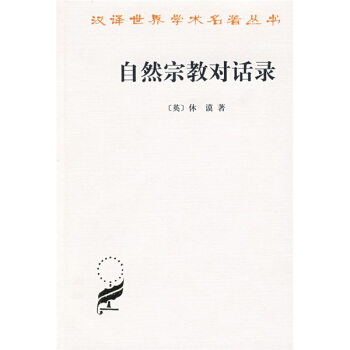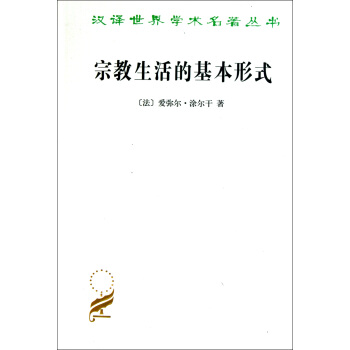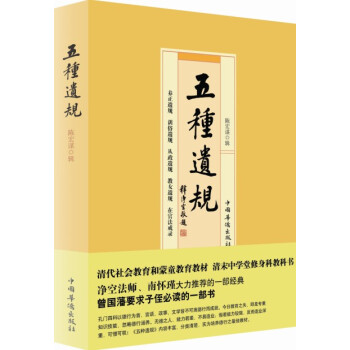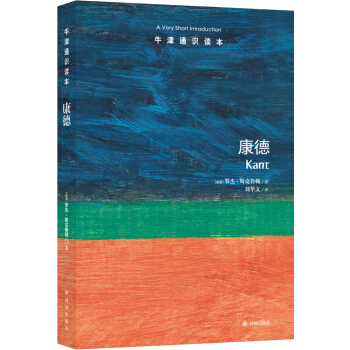具体描述
产品特色
编辑推荐
《黄帝阴符经》,被誉为“辨天人合变之机,演阴阳动静之妙”,朱熹评价曰:“非深于道者不能作”。历史上,它曾被视为兵书、神仙书和治国方要,多有为国谋运者或治世之能臣为之托名注述,凭此书而建功立业者,亦不乏少数。苏秦得《阴符经》,伏而诵之,遂成布衣卿相,佩六国相印,立不世之功。
“乃夜发书,陈箧数十,得太公《阴符》之谋,伏而诵之,简练以为揣摩。读书欲睡,引锥自刺其股,血流至足。曰:‘安有说人主不能出其金玉锦绣,取卿相之尊者乎·’期年揣摩成,曰:‘此真可以说当世之君矣 。’”
——《战国策》 苏秦读《黄帝阴符经》
无论太平盛世之时,抑或时局日乱之世,皆可由此书体悟通天晓地、随机应变的智慧,掌握“观天之道,执天之行”的自主权。
内容简介
《新解黄帝阴符经》分为两大部分,刘君祖先生依经解经,贯通经典,观照现实,分别对《黄帝阴符经》和《天机经》进行了解读。《阴符经》不过短短四百余字,《天机经》亦不过两千余字,却皆为道藏经典。两书合观,读者尽可于千余字间沉潜,掌握天地万物运行的自然规律,体悟道家智慧和修养方法,“观天之道,执天之行”,览粲然义理,察古人心迹,登临“宇宙在乎手,万化生乎身”之人生境界。
作者简介
刘君祖,1952年生,祖籍湖南宁乡。台湾周易文化研究会创会理事长,中华孙子兵法研究会副会长,中华奉元学会现任理事长。
刘君祖先生精研传统经典近四十年,尤其深修《易经》等道家经典,为近年来享誉海内外的易学大家。
刘君祖先生于书院讲授传统经典近三十年,授课内容涉及四书五经、诸子百家、以及佛家经典。他讲授的传统经典,注重依经讲经,体贴经义,将深奥难懂的义理,转化为切实有用的人生智慧,呈现了传统文化的真味道,开启了现代中国人真正读懂中华传统经典的方便之门。多年来,他一直孜孜致力于两岸的文化交流和中华传统文化的传承与推广工作。
目录
自序·梦里江山更好·
壹·阴符经
上篇·神仙抱一演道章
中篇·富国安民演法章
下篇·强兵战胜演术章
贰·天机经
总序
昌:天有五贼,见之者昌
身:万化生乎身
机:人心,机也
藏:性有巧拙,可以伏藏
静:耳目口,可以动静
人:知之修炼,谓之圣人
安:三盗既宜,三才既安
神:不神之所以神
圣:圣功生焉,神明出焉
命:小人得之,轻命
倍:绝利一源,用师十倍
物:心生于物,死于物
目:机在目
蠢然:迅雷烈风,莫不蠢然
生:恩生于害,害生于恩
胜:阴阳相胜
顺:阴阳相推,而变化顺
契:律历所不能契
象:爰有奇器,是生万象
附录
《阴符经》本文
《天机经》本文
精彩书摘
上篇·神仙抱一演道章
《黄帝阴符经》又称《阴符经》或《轩辕黄帝阴符经》,涉及哲学与军事等方面。相传此书出自黄帝,部分学者认为是后人伪托。有人说写于商朝,有人说作者是战国时的苏秦,有人说是北魏的寇谦之,也有人说是唐朝的李筌,成书年代莫衷一是。
《黄帝阴符经》分上中下三篇,是讲演道、演法、演术,即从道这一大原则到法、术的策略、方法。说“神仙抱一”,显然是因为《黄帝阴符经》在《道藏》里头。《黄帝阴符经》和鬼谷子的《本经阴符七术》,都属于《道藏》,都用“阴符”这两个字,但内容可不是一回事,只是思维方式有点相像。
《本经阴符七术》在中国古代的哲学和兵学中都占有重要的地位,作为道教的一部重要道经,历代对它的注解都不在少数。《本经阴符七术》,“本”是根本的意思;“本经”,主要讨论精神修养;“阴符”,强调谋略的隐蔽性与变化莫溯。《本经阴符七术》涉及策略、互动的较量招式,而《黄帝阴符经》是整个从道谈到法、术,比较全面、比较完整。冠上“黄帝”的名称称为“经”的经典在中国是很多的。西汉初年的文化复兴,系因秦始皇焚书坑儒,但到汉武帝独尊儒术之前,还是“黄老”当道。“黄老”就是黄帝和老子,所以那时很多的书借黄帝的名,最有名的就是《黄帝内经》。《阴符经》前面挂上“黄帝”两个字,属于“黄老”这个道家的体系显然是没有疑问的。其实,整个中国学问就是源于道,这个道不是狭义的道家之道(只是道家用了道的名称),而是大道的道,儒、道都从这里来,其他的墨、法诸家都源于道。
“阴符”,“符”就是符合、符应,就像《易经》中的占卦跟事情的结果是相应的、符合的。一块竹子劈成两半,结果可以合在一起,能够契合,怎么契合的?就是表面上看不出来,而是暗中契合,这就要用智慧、用术了,尤其是道家这一套,如柔能克刚,表面上看好像不怎么样,最后赢的却是柔的一方,只是柔这一方在阴进行,不在阳进行,所以很难防范。“阴符”就是最后发现都符合预测,达到了希望的结果,暗合于大道,而且表面上不易防范,不显山,也不露水。
人生在世就是道、法、术。你是哪一道的,是同道,还是道不同不相为谋?下面就要讲法,不然一个东西没有办法成形。最后一定要讲术,会竞争,会合作,会互动。术源于法,法源于道。在法家中,除了“法”跟“术”之外,主要提的就是“势”,形势很重要。
好,我们开始进入上篇“神仙抱一演道章”。
观天之道,执天之行,足矣!
上篇开头十个字,开门见山,不讲闲话,直接就讲核心。“观天之道,执天之行,尽矣”,“尽矣”,全部都在这里了。也就是说,整部《黄帝阴符经》对于宇宙人生的看法就在“观天之道,执天之行”这八个字,就是天道、天行。
道的层次是最高的,“行”就是道由“体”启“用”,开始运转、流行,我们甚至可以画出其轨迹,就像《易经》中的十二消息卦。“剥极而复,天行也”,“七日来复,天行也”,剥卦(ぺ)、复卦(こ)的《彖传》都讲“天行”,“天行”也是乾卦()《大象传》的概念:“天行健,君子以自强不息。”整个宇宙的日月星辰都有规范的运行轨迹、周期,那个现象就是“天行”,显现在外头。
人有人的行,天有天的行。自然现象的种种演变、运转,自强不息,就是“天行”,也是自然的运转规律,这种现象可以由观察得知其运行轨迹、规律。这些规律没有人能改变它,我们要“执天之行”,即一定要把天行的自然规律紧紧抓住。“执”,就是要抓紧,不能松掉。因为形势一定是按照规律演变,不能松脱,要执,要守,还要信受奉行。
“执天之行”前面为“观天之道”,天道是根本看不到的,要去体察,需要“仰观天象,俯察地理”。“天之行”后面一定有“天之道”,一定有规律、道理,即变易、不易、简易的规律,要用观的功夫,就像“乾道变化”我们看不到。可是因为“乾道变化”,我们才看到“各正性命”;由“云行雨施”,我们就看到“品物流形”。所以,我们要通过变化去尝试观察、观想,去想天道是怎么回事。《老子》第一句就讲“道,可道,非常道”,可知,天道没有那么容易,不是掌握知识就能对应,也不是一般的世俗智慧能够体验、体证的。
如果能够“观天之道”,就会如《易经》观卦(ぢ)《彖传》所说的“观天之神道,而四时不忒”,“神”是动词,即把天道发挥得淋漓尽致,阴阳不测到最高境界。人去观天之神道,表现在可以看得到、体察到的现象——“四时不忒”,对春夏秋冬的观察精确到极点。
“观天之道”是第一步,“万物静观皆自得”,下面就要按照天行来决定我们人生的奋斗。“执天之行”,要谨守天道、天则来行事。人生就是“观天之道,执天之行”这八个字,没有别的,真的是“尽矣”,人的成败、是非、祸福全在这其中。就像《易经》所说的,顺天之行,就能达到“大人”境界——“先天而天弗违,后天而奉天时”。“先天”是反应快,但是仍然是用天道的必然规律,只是更早发现,后来应验了。“先天而天弗违”,因为天也是按照这一套,大人的高瞻远瞩也是按照这一套,只是比天还快,还没有任何征兆前就已经布好了局,最后形势发展确实也是如大人所料。要是稍微慢一点,至少也是“后天而奉天时”,看到时机来了,赶快抓住,按照自然的规律去理解、推导,思患预防,趋吉避凶。
所有的智慧就在“观天之道,执天之行”这八个字。先观再行,“观”是思想观念,是观察的境界,先了解、认知,认知之后有心得,就按照心得、规律去行动。先知而后行,所以,“执天之行”的前面是“观天之道”。如果只有“观天之道”,没有“执天之行”,就没落实。知而不做,知而不行,都是空。
很多人对佛教的《心经》都会朗朗上口地背诵。《心经》就是先观而后行:第一句的第一个字就是“观”——“观自在菩萨”,而第二句第一个字就是“行”——“行深般若波罗蜜多时”。这时智慧之光就可以“照见五蕴皆空,度一切苦厄”。这一点不容易,我们永远都做不到。五蕴都空,就不会有任何障碍,可以直探本源,能够帮助你度一切苦厄。要是还陷在“色、受、想、行、识”的五蕴之中,当然苦厄就不可能统统解脱。毕竟,有的苦厄你可以咬牙承受,有的苦厄就让你受不了了。这是因为陷在五蕴的假象中,所以要破五蕴之苦。也就是剥极而复的意思,把假象都剥光了,真相自然就呈现;要是没有剥光、剥净,还是不究竟,脱离不了苦厄。
先观而后行,人生就是这样,观了一定要记得行。没有行的观,不算数。如果没有观的行,就一天到晚乱来,缺乏正确观念的指导。
“观天之道,执天之行”说得很圆融,没有说“观人之道,执人之行”,因为人有很多欠缺,有欲望、业障的羁绊,一天到晚犯错,一天到晚造业,只能往天道修正。整部《易经》也是在教我们“观天之道,执天之行,尽矣”,没有别的,就这么做。
天道是最高的境界,天行是按照天道行事,除了天道、天行,还有天命。《易经》中的临卦讲天道,无妄卦讲天命。“大亨以正,天之命也”,是无妄卦;“大亨以正,天之道也”,是临卦。但是道比命大,临卦第二爻“咸临,吉无不利”,为什么可以随心所欲?因为它契合天道,不必去管天命,所以“未顺命也”,只需“咸临”无穷的创意。
“观天之道,执天之行,尽矣”,我们也可以看成乾卦和坤卦。“乾以易知,坤以简能”,一个是知,一个是能;一个是正确的理解,一个是充分的实践。如果“观天之道”是属于乾卦“知”的境界,“执天之行”就是坤卦“能”的境界。有没有这个能耐,有没有这个耐心,“地势坤”,要接地气,要在广土众民中顺着现实的形势,把乾卦高高的理想落实,是最难的。“地势坤”的“势”,执力为“势”,落实确实需要力道。
……
前言/序言
《新解黄帝阴符经》—— Decoding the Esoteric Teachings of the Yellow Emperor I. Introduction: Unveiling the Enigma of the Yin Fu Jing For centuries, the Huangdi Yinfu Jing (黄帝阴符经), or the Yellow Emperor's Scripture of the Hidden Seal, has stood as a profound and enigmatic text within the vast landscape of Taoist philosophy and esoteric thought. Its brevity, cryptic verses, and seemingly paradoxical pronouncements have long challenged scholars and practitioners alike, rendering its true meaning a subject of persistent debate and diverse interpretations. Unlike sprawling treatises or systematic doctrinal expositions, the Yin Fu Jing presents itself as a series of concise, potent aphorisms, demanding deep contemplation and intuitive understanding rather than straightforward logical deduction. Its influence, however, has been undeniable, permeating various schools of Taoism, Chinese martial arts, traditional medicine, and even political strategy. The enduring allure of this text lies not just in its historical significance but in its promise of unlocking fundamental truths about the universe, human nature, and the path to achieving harmony and mastery. The Yin Fu Jing is often considered one of the foundational texts of Taoist alchemy and internal cultivation. Its core message is believed to reveal the profound interconnectedness of all things, the underlying principles that govern the cosmos, and the hidden pathways through which individuals can align themselves with these universal forces. The term "Yinfu" itself, translating to "hidden seal" or "secret inscription," hints at the text's nature – knowledge that is not readily apparent, requiring a deciphering and unveiling of its deeper layers. This hidden knowledge is not merely theoretical; it is practical, offering guidance for navigating the complexities of existence, cultivating inner strength, and ultimately achieving a state of profound enlightenment and integration with the Tao. The text’s genesis is shrouded in legend, attributed to the mythical Yellow Emperor, Huangdi, a revered sage-king who, according to tradition, received these teachings from the celestial realm. While historical scholarship places its composition in a later period, the attribution to Huangdi imbues it with an aura of ancient wisdom and divine authority. This legendary origin story underscores the text's profound importance and its role as a repository of timeless truths passed down through the ages. However, the very nature of the Yin Fu Jing – its condensed and symbolic language – has led to a multitude of interpretations throughout history. Different schools of thought and individual practitioners have emphasized various aspects, leading to a rich tapestry of understanding. Some have focused on its cosmological implications, seeing it as a map of universal laws. Others have delved into its alchemical symbolism, viewing it as a guide to transforming the body and spirit. Still others have found in its verses principles for effective leadership and strategic thinking. This diversity of interpretation, while contributing to the text's richness, also highlights the need for careful and insightful exposition. II. The Core Themes and Philosophical Underpinnings At its heart, the Huangdi Yinfu Jing is concerned with the fundamental principles of Tao (道), the ultimate reality and the pervasive, generative force of the universe. It suggests that by understanding and aligning with the Tao, individuals can achieve balance, harmony, and mastery over themselves and their surroundings. The text emphasizes a dynamic, ever-changing reality, characterized by the interplay of opposing yet complementary forces, most notably Yin (阴) and Yang (阳). One of the central tenets is the concept of wu wei (无为), often translated as "non-action" or "effortless action." This is not to be mistaken for idleness or passivity. Instead, wu wei signifies acting in accordance with the natural flow of the Tao, without forcing or resisting. It is about acting spontaneously, intuitively, and in perfect attunement with the circumstances, achieving maximum effect with minimal exertion. The Yin Fu Jing implies that by understanding the subtle currents of the universe, one can learn to harness these forces, achieving potent results by yielding rather than contending. The text also delves into the interconnectedness of microcosm and macrocosm. It posits that the principles governing the vast universe are mirrored within the individual human being. By understanding the inner workings of the self, one can gain insight into the workings of the cosmos, and vice versa. This perspective is fundamental to Taoist internal cultivation practices, which aim to refine the body and spirit, harmonizing them with the universal Tao. The body is seen as a microcosm of the universe, containing within it all the essential energies and principles. Furthermore, the Yin Fu Jing emphasizes the importance of subtlety and hiddenness. The "hidden seal" aspect suggests that true power and profound understanding lie not in overt displays but in subtle, underlying mechanisms. It speaks of observing the unseen, understanding the unspoken, and acting from a place of deep internal knowledge. This principle is applied in various contexts, from strategic warfare, where understanding the opponent's intentions and vulnerabilities is paramount, to personal cultivation, where one learns to access and manipulate internal energies with utmost discretion. The text's cyclical view of existence is also crucial. It describes processes of birth, growth, decay, and transformation, mirroring the natural cycles observed in the seasons, the heavens, and within the human body. Understanding these cycles allows for adaptation, foresight, and the ability to act at the opportune moment. It is about recognizing the ebb and flow, the opportune moments for action and for stillness. III. Key Concepts and Their Deeper Meanings While a comprehensive exegesis of every verse is beyond the scope of this introduction, several key concepts consistently emerge from the Yin Fu Jing and warrant closer examination: "The Tao generates One, One generates Yin and Yang, Yin and Yang generate the Ten Thousand Things." This foundational statement, echoing the Tao Te Ching, sets the stage for understanding the cosmic order. The Tao, the ineffable source, gives rise to unity, which then differentiates into the fundamental dualities of Yin and Yang. This duality is the engine of creation, producing the myriad phenomena of the universe. The Yin Fu Jing suggests that by grasping this generative process, one can begin to understand the underlying patterns of reality. "He who knows the rhythm of Yin and Yang is not perplexed by a thousand changes." This highlights the practical application of understanding cosmic principles. By recognizing the inherent dynamism of Yin and Yang, and their constant interplay, one can develop a profound resilience and adaptability. Instead of being overwhelmed by the flux of life, one can navigate it with equanimity, understanding that apparent chaos often follows underlying, predictable patterns. "To grasp the subtle, one must be subtle." This aphorism speaks to the nature of the knowledge the Yin Fu Jing imparts. It is not accessible through brute force or direct assault but through a refined perception and a sensitive approach. True understanding requires cultivating a subtle mind and a subtle body, capable of perceiving and interacting with the delicate energies and forces that shape reality. "When the movement is still, the stillness moves." This is a classic example of the text’s paradoxical language, which challenges conventional linear thinking. It suggests that stillness is not mere absence of motion but a potent state of potential and preparedness. In stillness, one can observe and understand the subtle movements of the universe, and from this place of deep awareness, one can then act with precision and effectiveness. Conversely, even within apparent movement, there is an underlying stillness or core principle that guides it. "The sage relies on the unseen, not the seen." This emphasizes the importance of inner wisdom and intuition over superficial appearances. The true source of power and understanding lies beneath the surface, in the hidden currents and motivations that drive events. The sage cultivates the ability to perceive these subtle, unseen forces and to act in accordance with them. "When the gate of heaven is open, the spirit is not obstructed." This verse points towards the cultivation of spiritual awareness and inner clarity. The "gate of heaven" can be interpreted in various ways, often relating to the crown of the head or a state of heightened consciousness. When this gate is open, the vital energies (Qi) flow freely, and the mind is unburdened, allowing for direct connection with higher principles and a state of unhindered perception. IV. Applications and Interpretations Across Disciplines The profound and multifaceted nature of the Yin Fu Jing has led to its interpretation and application in a wide array of disciplines and practices: Taoist Alchemy (Neidan): In internal alchemy, the Yin Fu Jing is seen as a manual for transforming the practitioner's internal energies. The concepts of Yin and Yang, the circulation of Qi, and the refinement of essence are central to achieving spiritual immortality and physical vitality. The text provides a symbolic language for the stages and principles involved in this intricate inner work. Traditional Chinese Medicine (TCM): The principles of Yin and Yang, balance, and the flow of Qi are fundamental to TCM. The Yin Fu Jing offers a deeper philosophical underpinning for these concepts, suggesting that disease arises from imbalance and that health is achieved through restoring harmony. Its emphasis on subtle energies and interconnectedness resonates with the holistic approach of TCM. Martial Arts: Many internal martial arts, such as Tai Chi Chuan, Baguazhang, and Xingyiquan, draw heavily on the philosophical principles found in the Yin Fu Jing. Concepts like yielding to overcome force, using the opponent's momentum, and cultivating internal power through stillness and awareness are directly influenced by the text. The idea of "yielding to gain control" is a direct embodiment of wu wei. Strategy and Leadership: The emphasis on understanding subtle forces, acting with precision, and observing the unseen has made the Yin Fu Jing a text of interest for strategists and leaders. It teaches the importance of anticipating opponents' moves, understanding underlying currents, and acting from a position of informed insight rather than brute force. Sun Tzu's Art of War shares thematic similarities in its focus on deception, intelligence, and psychological advantage. Philosophical Contemplation: Beyond specific practices, the Yin Fu Jing offers a profound framework for contemplating the nature of reality, existence, and the human condition. Its verses, when deeply meditated upon, can foster a shift in perspective, leading to a more integrated and harmonious understanding of oneself and the world. V. The Importance of "New Interpretation" The very existence of a "New Interpretation" of the Huangdi Yinfu Jing signifies the ongoing relevance and the enduring challenge posed by this ancient text. Over centuries, numerous commentaries and interpretations have been produced, each reflecting the intellectual and spiritual milieu of its time. However, the condensed and symbolic nature of the original text means that there is always room for deeper exploration and fresh perspectives. A "new interpretation" aims to: Address the limitations of previous understandings: By re-examining the text with contemporary knowledge, philosophical frameworks, and scientific insights, it seeks to uncover nuances and connections that may have been overlooked. Clarify the obscure: The Yin Fu Jing's cryptic nature often leads to ambiguity. A new interpretation strives to offer clearer explanations and more accessible pathways to understanding its profound concepts. Connect ancient wisdom to modern life: The challenges and complexities of the modern world require wisdom that is both timeless and relevant. A new interpretation seeks to bridge this gap, demonstrating how the principles of the Yin Fu Jing can offer guidance for navigating contemporary issues, fostering personal growth, and achieving a more balanced and fulfilling existence. Provide a practical framework: While deeply philosophical, the Yin Fu Jing is also a text of practical wisdom. A new interpretation may offer more concrete methods and actionable insights for applying its principles in daily life, whether in personal development, professional pursuits, or spiritual practice. In conclusion, the Huangdi Yinfu Jing remains a seminal work, a beacon of esoteric wisdom that continues to illuminate the path for those seeking to understand the deepest principles of the universe and their place within it. Its concise verses hold a universe of meaning, inviting continuous exploration and profound transformation. This new interpretation seeks to unlock further layers of its enigmatic message, making its timeless truths accessible and relevant for the modern seeker.
